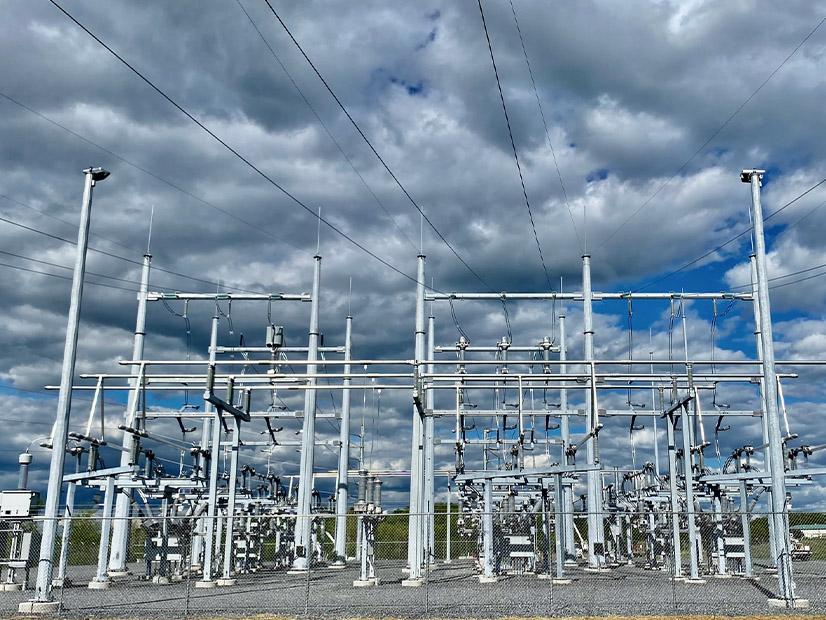
The New York Public Service Commission’s work implementing the Accelerated Renewable Energy Growth and Community Benefit Act won praise in comments filed last week, but parties said much more work is required to increase the transmission capacity needed to meet the state’s clean energy goals.
The act was meant to improve and streamline the process for building renewable projects around the state. It included setting up a new Office of Renewable Energy Siting and to help speed up the development of needed transmission.
The Alliance for Clean Energy New York, New York Offshore Wind Alliance, Advanced Energy United and the Natural Resources Defense Council submitted joint comments saying that expanding transmission is critical to the cost-effective integration of renewables and praising the PSC for its actions so far. But they said the rate of transmission development needs to speed up to affordably meet the requirements of the Climate Leadership and Community Protection Act, which calls for a carbon-free grid by 2040.
“If not, renewable energy projects will be delayed, leading to the state not complying with the CLCPA mandates,” the groups said.
The PSC recently approved utilities spending $3.5 billion on 62 transmission upgrades meant to open up transmission capacity for renewables, but many of the projects will not be built until the end of the decade, or even beyond. (See NY PSC Approves 62 Tx Upgrades Totaling 3.5 GW.)
The longer it takes to build transmission, generator developers are more likely to price higher risk premiums into their offers for renewable energy credits (RECs).
“These risk premiums are necessitated by the uncertainty surrounding the developers’ ultimate cost obligation and local transmission owners’ construction time frames for system upgrades revealed through interconnection cost studies undertaken by the TOs and the NYISO,” the groups said.
Developers only get solid estimates of the transmission costs they face after they submit bids, which means they have to price such risks into their RECs. The groups argued that the PSC should ensure transmission is built before new power plants to limit those risks, which can work for both offshore and onshore resources.
EDF Renewables, which has built five projects in the state so far and has more in the pipeline, agreed, saying in its own filing that renewable projects will continue to experience congestion and curtailments until the new transmission infrastructure come online in 2029.
“Given the ambitious CLCPA targets throughout 2040, and the long lead time for transmission upgrades, it is critical that the state continues to explore effective transmission solutions and ensure they are approved in a timely manner,” EDF said.
Consolidated Edison (NYSE:ED) urged the PSC to continue leveraging local utilities’ expertise in expanding the grid to advance the state’s clean energy transition. Regulators should prioritize “multi-value projects” that connect clean energy to the grid while also improving reliability and cutting costs.
The utility wants the PSC to approve the “Coordinated Grid Planning Process” it recently filed along with the state’s other utilities. (See NY Utilities Propose Plan to Coordinate Decarbonization Efforts.) The proposal represents an end-to-end holistic process to identify and approve local transmission investments needed to achieve the state’s climate goals.
The four trade groups and EDF also want to see the CGPP approved, though they suggested changes including making it run every two years instead of three.
While the CGPP would help, the PSC should continue using NYISO’s Public Policy Transmission Planning Process to complement it and procure all the needed transmission to eliminate emissions from the power sector. EDF argued that the ISO’s process should be used to supplement the PSC’s 62-project package with infrastructure around the city of Watertown east of Lake Ontario and in the Southern Tier to ensure the grid can accommodate all of the new renewable projects being built.
LS Power urged the commission to avoid relying too heavily on the utilities, arguing that many of its actions implementing the law have lacked competition and transparency.
“As a result of [this] process, New York ratepayers will be responsible for billions of dollars of investment in transmission projects,” LS Power said. “Continued approval for the majority of this construction outside of a competitive process does not provide the best result for ratepayers.”
The commission should rely on competitive processes to build out the needed transmission because that has already benefited consumers in the state by lowering costs and accommodating more renewable generation, the company said. The PSC should look to maximize the use of existing NYISO processes and avoid approval of bulk transmission that does not come out of competitive planning processes.
